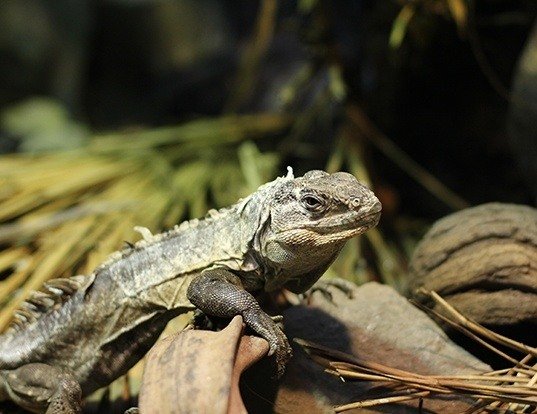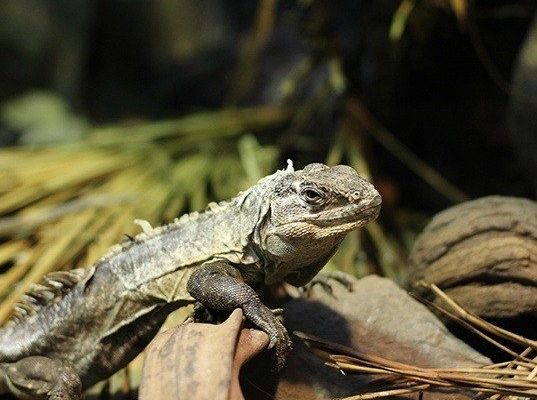
Spiny-tailed iguanas, particularly the Ctenosaura genus, can be truly stunning with their vibrant colors and distinct spiny tails. They come from tropical areas of Central America, thriving in warm habitats. But like any pet, they come with responsibilities and commitments. Understanding their lifespan and growth expectations is essential to ensure you’re ready for this beautiful, scaly companion.
Average Lifespan of a Spiny-Tailed Iguana
The lifespan of a spiny-tailed iguana can vary quite a bit depending on several factors, including species, care, and environmental conditions. On average, these iguanas tend to live anywhere from 10 to 20 years when provided with proper care. Here’s a breakdown to give you a clearer picture:
- Species Variations: Some species within the Ctenosaura genus may have different lifespans. For example, the Ctenosaura pectinata can live around 12-15 years, while others may reach up to 20 years.
- Care Quality: Like us, their quality of life plays a huge role. A well-fed, healthy iguana that gets plenty of exercise and proper veterinary care will generally outlive one that doesn’t.
- Environmental Factors: If these iguanas are stressed—say, from improper habitat or handling—they may not live as long. It’s like how we feel better in a cozy home; they need their own safe space.
To ensure your spiny-tailed iguana thrives, focus on creating an enriching environment. A spacious cage with the right temperature gradient, good lighting (like UVB bulbs), and a varied diet can make a world of difference.
Growth Expectations of a Spiny-Tailed Iguana
When it comes to growth, spiny-tailed iguanas can surprise their owners. They grow quickly, especially during their first few years. Here’s what you can expect:
- Size at Maturity: Most spiny-tailed iguanas reach about 2 to 4 feet in length when fully grown, depending on the species. That’s pretty big for a pet lizard!
- Growth Rate: In the first year, you can expect them to grow about a foot and continue to gain some length into their adulthood. It’s like watching a teenager shoot up in height!
- Weight: Their weight can also vary, typically averaging between 5 to 10 pounds. A healthy iguana should feel solid and not too skinny.
You might be wondering how to ensure they grow up healthy. A balanced diet rich in leafy greens, fruits, and insects is key. Combine that with a safe environment, and you’re on your way to having a robust and vibrant companion.
Factors Influencing Lifespan and Growth
Several factors can influence both the lifespan and growth rate of your spiny-tailed iguana. Let’s break these down to help you mitigate risks and enhance your iguana’s quality of life:
- Diet: A nutritious diet not only promotes growth but also boosts their overall health. Avoid low-nutrition foods, and stick to a variety of veggies and protein sources.
- Habitat: Having a spacious and clean living environment is crucial. A cramped or dirty cage can lead to stress, illness, and stunted growth.
- Health Monitoring: Regular check-ups with a vet who specializes in reptiles can catch any potential issues early. Just like with us humans, catching problems early can make a big difference.
Creating a suitable habitat with the right heating and humidity levels also plays a vital role. Without these, their growth may slow down, making them more susceptible to health problems.
Behavior and Socialization
Understanding a spiny-tailed iguana’s behavior is essential for both their happiness and longevity. These iguanas can be quite social, and how you interact with them can impact their well-being.
- Handling: Regular, gentle handling can help your iguana become accustomed to you. But be mindful—overhandling can stress them out. Think of it like getting used to a new school; too much too fast can be overwhelming.
- Tank Mates: While some iguanas tolerate other reptiles or even specific tank mates, others might not. Always keep an eye on their interactions, as stress can lead to health issues.
- Enrichment: Providing climbing opportunities, hiding spots, and even a basking area can keep your iguana stimulated. It’s like giving them their version of a playground!
Spiny-tailed iguanas thrive on interaction and stimulation, so keep their environment engaging. This not only helps with their growth but also contributes to a longer, healthier life.
The Ideal Living Conditions for Longevity
Creating the perfect living conditions for your spiny-tailed iguana is crucial. If you’ve set up a cozy home for them, they’ll likely thrive and grow to their full potential.
- Temperature and Humidity: Aim for a temperature gradient between 75°F and 90°F. The humidity should be around 30-50%. Providing a heat lamp can help maintain temperatures, creating a basking area they’ll love.
- Enclosure Size: A larger enclosure allows for proper growth and behavior. A 6-foot-long cage is ideal, with plenty of vertical climbing space. Remember, the bigger, the better!
- Lighting Needs: UVB light is essential for their health. Without it, they can develop metabolic bone disease, which can severely limit their growth and lifespan.
By ensuring the right conditions, you’re setting your iguana up for success. It’s like giving them a comfy bed to sleep in; everyone sleeps better when they’re comfy!
Final Thoughts
Owning a spiny-tailed iguana can be a rewarding experience. Understanding their lifespan and growth expectations helps you prepare for this unique journey. With a lifespan of 10 to 20 years and a rapid growth rate in their early years, these reptiles can become lifelong companions.
Remember, providing the right care isn’t just about meeting their basic needs; it’s about creating an enriching environment that promotes their health and happiness. So, dive into this adventure with knowledge and passion, and you’ll both enjoy many years together. Your new friend is waiting to grow alongside you!

